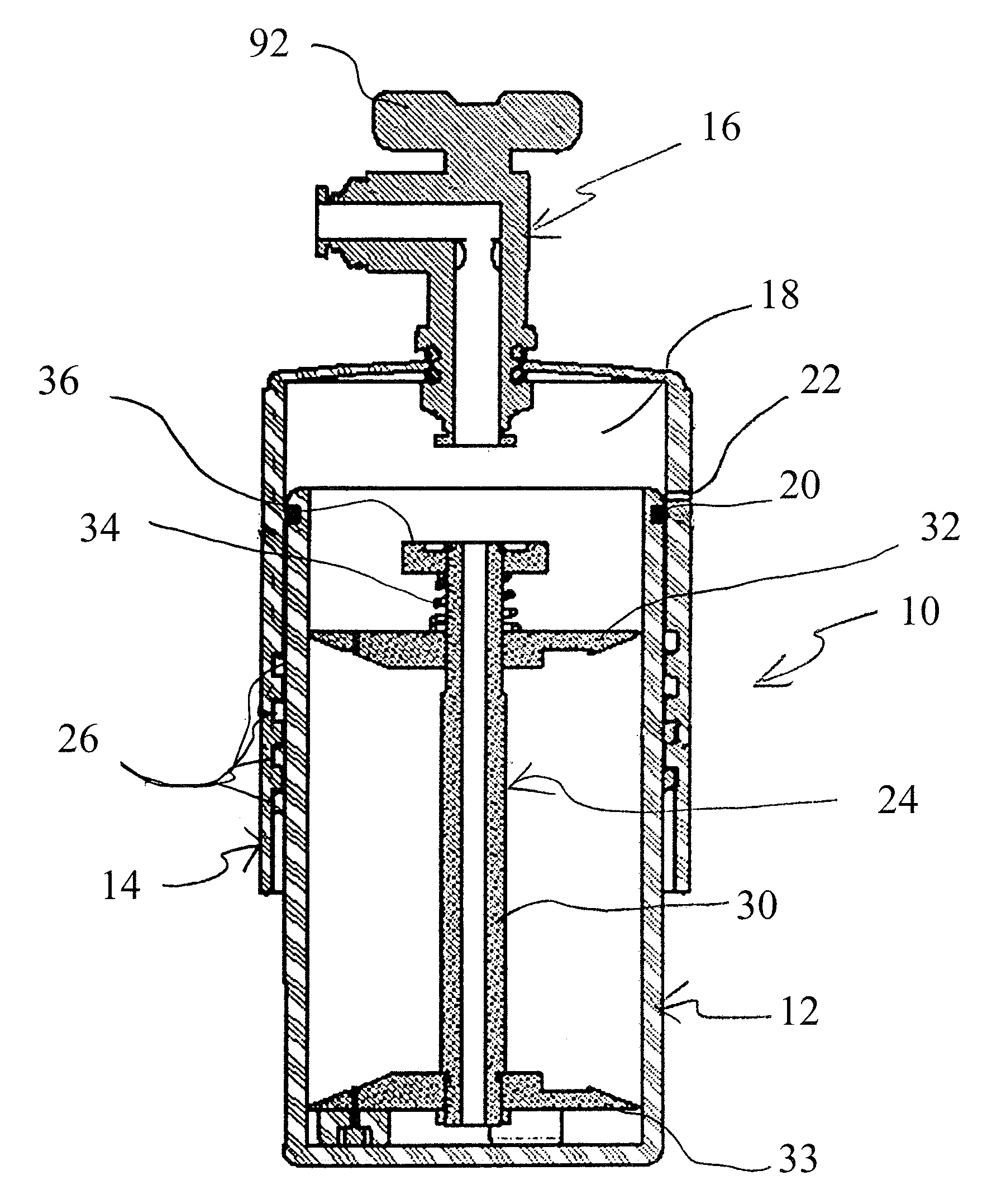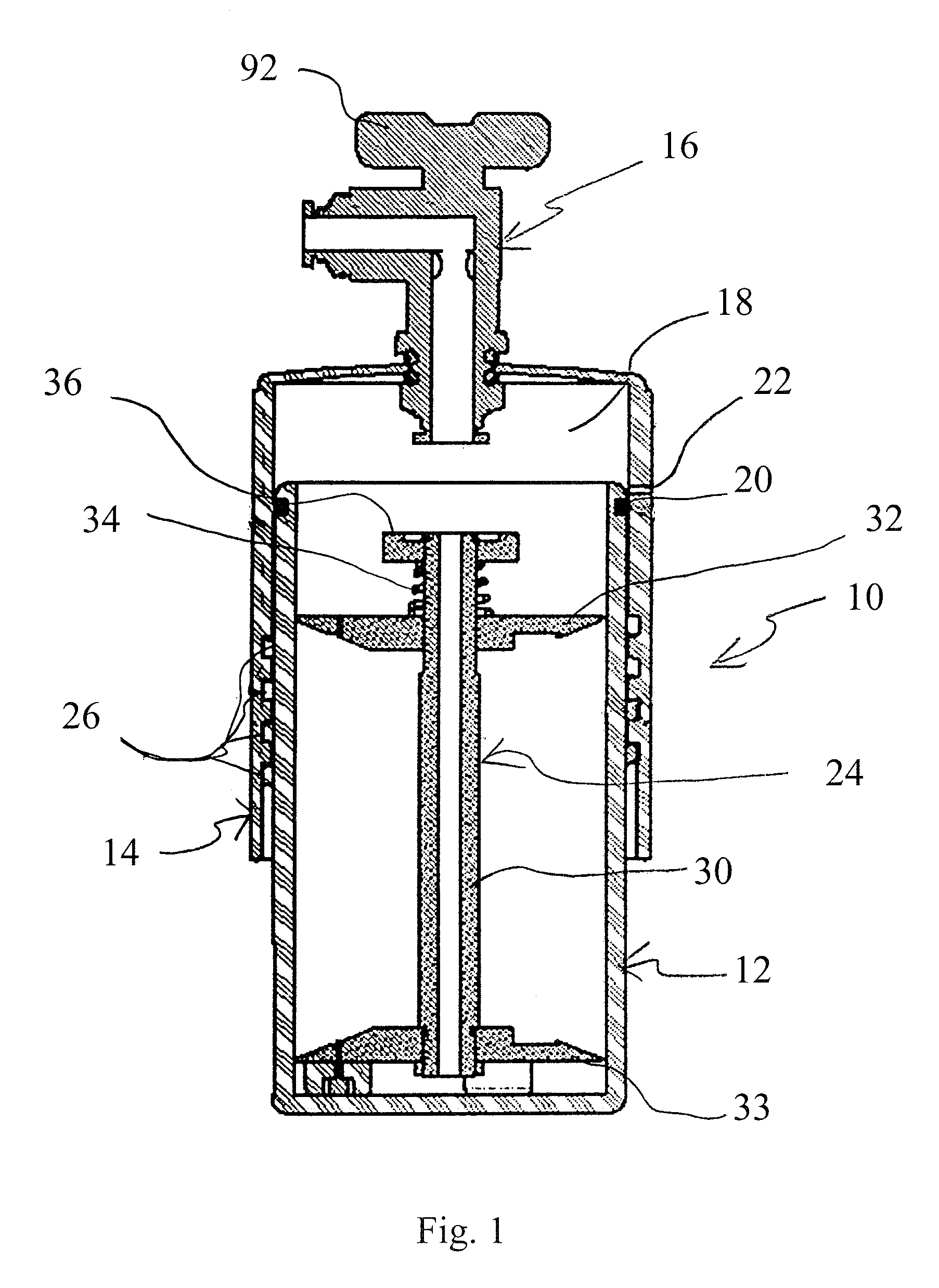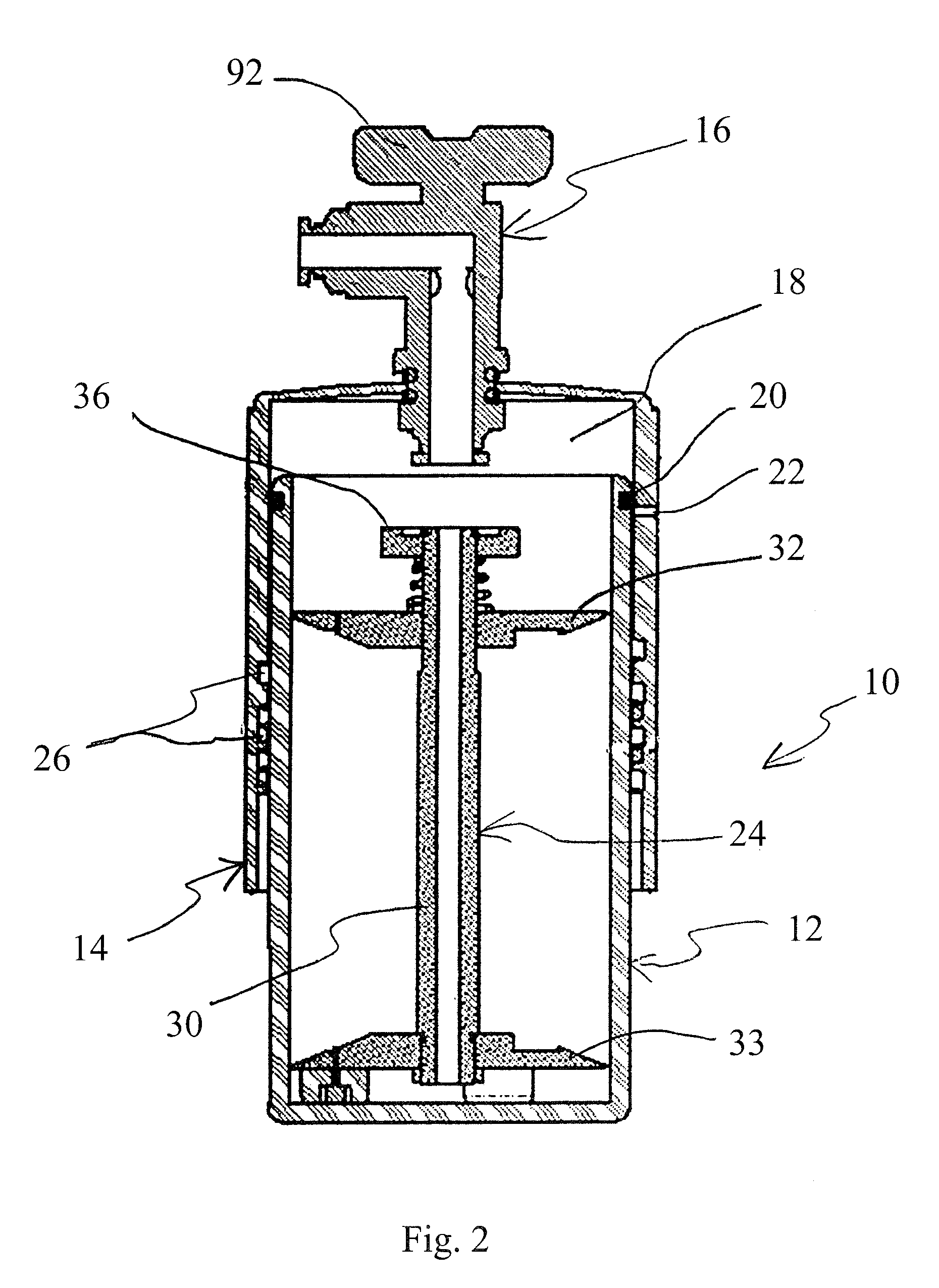Specimen preservation systems and methods
- Summary
- Abstract
- Description
- Claims
- Application Information
AI Technical Summary
Benefits of technology
Problems solved by technology
Method used
Image
Examples
Embodiment Construction
[0032]Referring now more particularly to FIGS. 1-3, there is shown a container 10 which is constructed in accordance with the principles of the present invention. The container 10 comprises a bottom portion 12 and a top portion 14, which are assembled together, as shown in FIG. 1, for example, wherein the bottom portion 12 is telescopically received within the top portion 14. An inlet gas valve 16 provides fluid access to an interior chamber 18 defined by the top portion 14 of the container 10. The valve 16 may be disposed at the non-open end of either the top or bottom cylinder or container portion 14, 12, respectively, though it is preferably located at the top end of the top container portion 14, as shown. A sealing O-ring 20 is disposed between the sidewalls of the top portion 14 and the bottom portion 12 of the container 10. An outlet opening or exhaust aperture 22 is disposed in the sidewall of the top portion 14, as shown in the drawings.
[0033]A sample holder insert 24 is pro...
PUM
 Login to View More
Login to View More Abstract
Description
Claims
Application Information
 Login to View More
Login to View More - R&D
- Intellectual Property
- Life Sciences
- Materials
- Tech Scout
- Unparalleled Data Quality
- Higher Quality Content
- 60% Fewer Hallucinations
Browse by: Latest US Patents, China's latest patents, Technical Efficacy Thesaurus, Application Domain, Technology Topic, Popular Technical Reports.
© 2025 PatSnap. All rights reserved.Legal|Privacy policy|Modern Slavery Act Transparency Statement|Sitemap|About US| Contact US: help@patsnap.com



